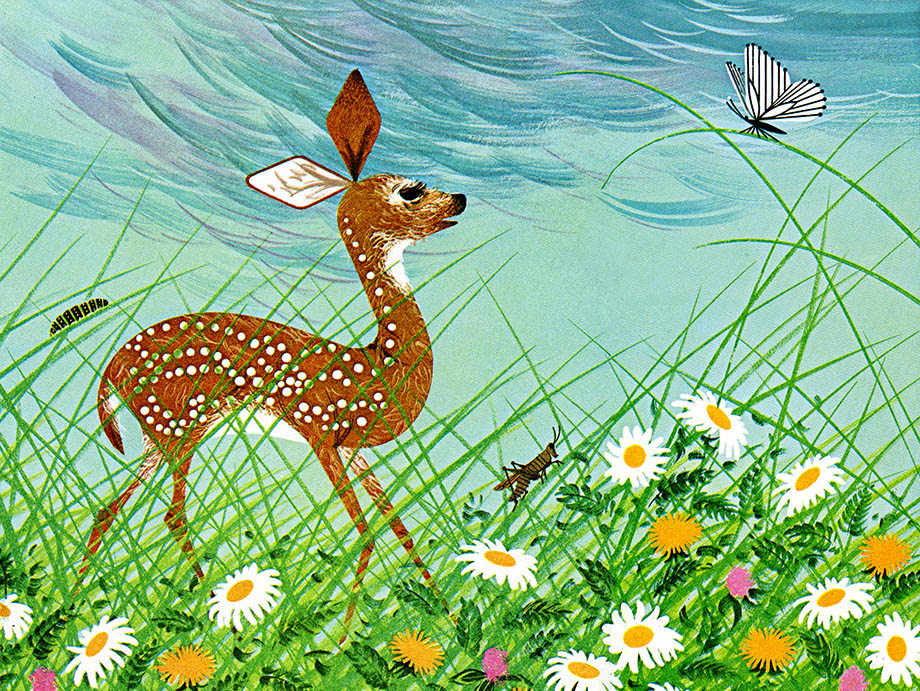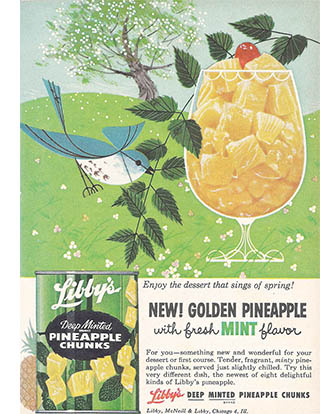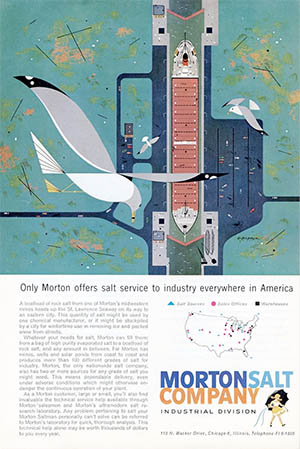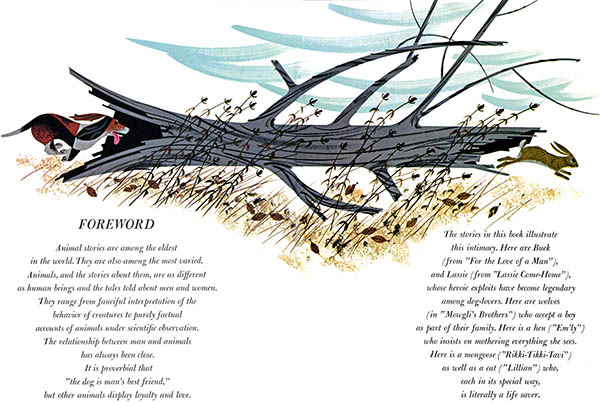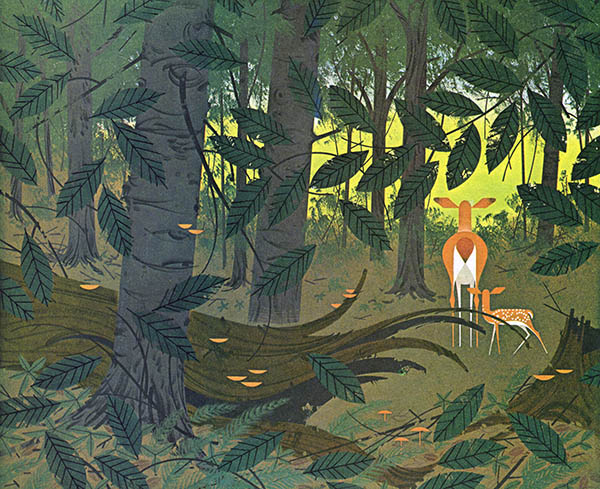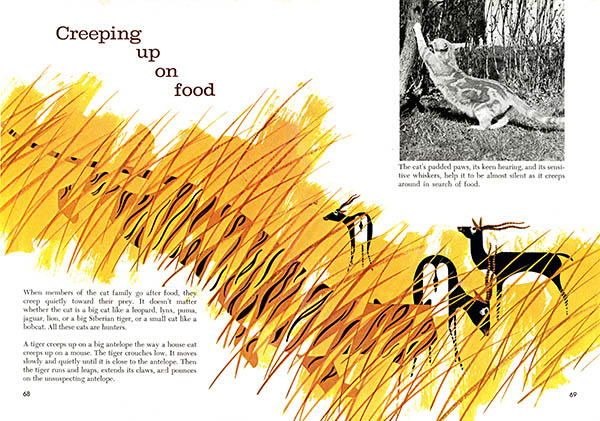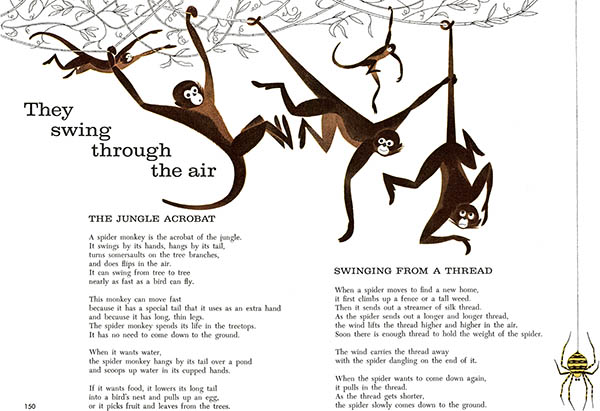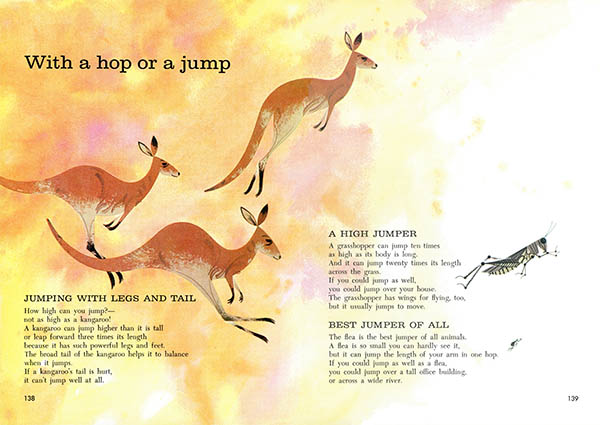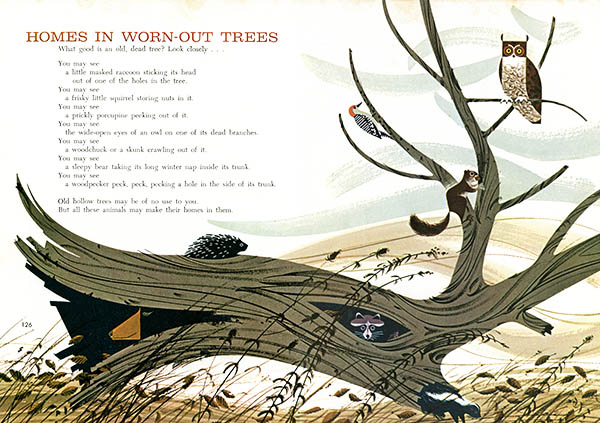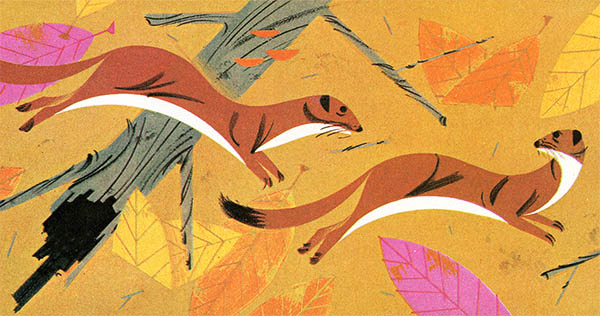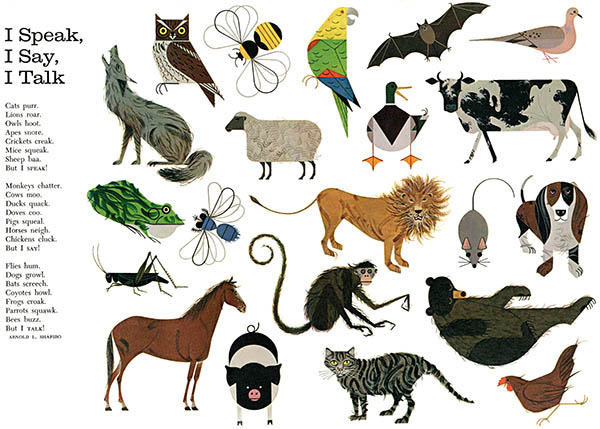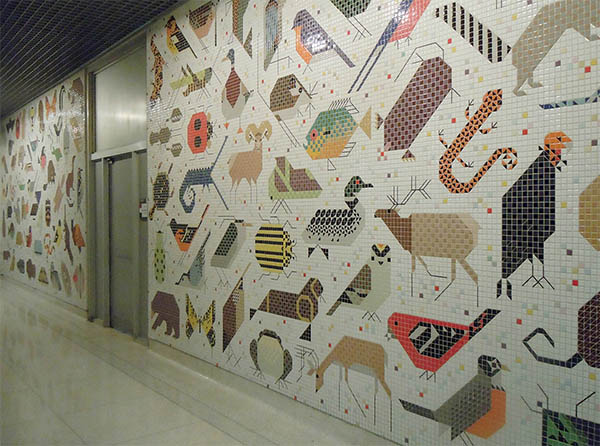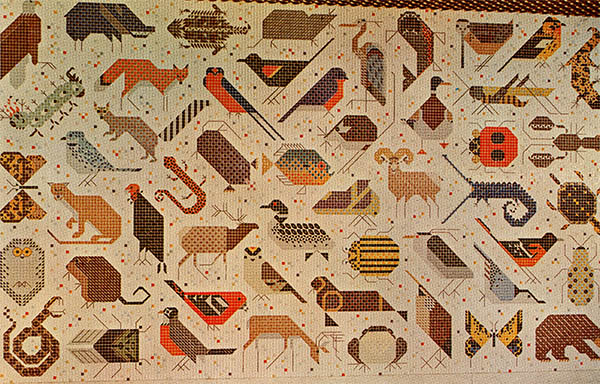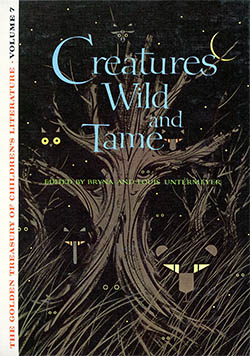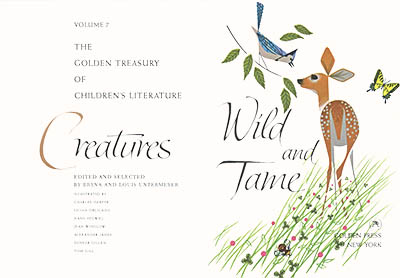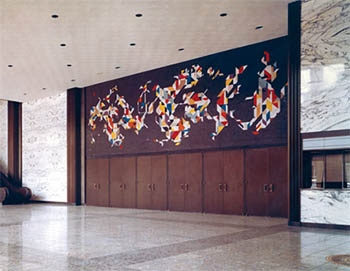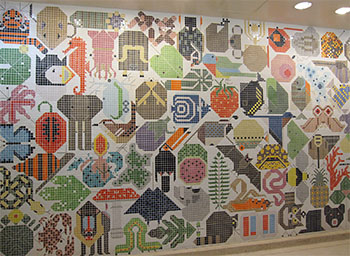The 1960s saw Charley as busy as ever. In addition to his continuing work for Ford, he did ad series for Libbey’s Pineapple and Morton Salt, illustrated a number of books and even installed a tile mosaic.
Libby’s Pineapple, 1959/1960
Morton Salt, 1963
After the Golden Book of Biology, Charley didn’t have a hard time getting work as a children’s nature illustrator. His next commission was in 1963 for the Bambi story in the Golden Press’ Creatures Wild and Tame.1
Of course Charley wasn’t going to illustrate it like Disney did. One of his former Art Academy students, Barron Krody, recalled “[Harper] was totally opposed to Bambi or Mickey Mouse – anything that gave human characteristics to animals.“ 2 Or as Charley put it:
“I am careful to avoid anthropomorphism, having learned once when I illustrated “Bambi” that I am unalterably opposed to implying that animals act from the same motives and think the same thoughts as humans.” 3
Harper’s respect for his animal subjects is certainly one of the reasons his work is so enduring.
Around the time of his Bambi work Charley began freelancing for the behemoth Field Enterprises, which published, among other things, the Childcraft Library and the World Book Encyclopedia. His illustrations first appeared in the 1964 edition of Childcraft 4 and the 1966 edition of World Book. Here are a few Childcraft examples:
In 1964 Charley was commissioned by the architects Potter, Tyler, Martin & Roth, to create a mural in the lobby of the new Cincinnati Federal Building. Initially he had difficulties reducing his designs into tile until he came up with the idea of using thin plastic strips to model details. The completed mural, titled American Wildlife, consisted of two 18 × 10.5' panels, and included more than 100 animals done entirely in ceramic tile (and the occasional plastic strip). Tile mosaic turned out to be a perfect medium for Charley’s Minimal Realism, and the results were unmistakable.
In situ, Dec 2010. Faythe Levine
Carnival Ceramics postcard, ca.1965
1. Salten, Felix. “Bambi Finds the Meadow” in Untermeyer, Byrna and Louis (ed). Creatures Wild and Tame. New York: Golden Press, 1963 (WorldCat). The story (with Harper’s illustrations) was also included in The Golden Treasure Chest: Animal Stories. New York: Golden Press, 1968, and The Golden Treasury of Animal Stories and Poems. New York: Golden Press, 1971.
2. Quoted from: Hillenmeyer, Kathleen. “Wildlife Artist Just Happy Doing What He Does Best.” Cincinnati Enquirer. Dec 11 1994.
3. Quoted from Charley’s letter to Hannah Wood.
4. Childcraft – the How and Why Library. Chicago: Field Enterprises Educational Corporation, 1964. Most of Charley’s illustrations are in volume 4, Life Around Us. In general the quality of illustration in the Childcraft Library is surprisingly good. In addition to Harper, the series also included illustrators such as Eloise Wilkin, William Steig, even Maurice Sendak. Harper’s illustrations appeared in the Library as late as the mid-1970s.
5. This is but one of several murals that Charley designed throughout his career. Here is the list:
Michigan Wildlife, Ford General Staff Office Building, 1951. The mural no longer exists.
Transportation Around the World, Ford Rotunda reception area, ca.1951. Destroyed by fire, 9 Nov 1962
American Wildlife (later renamed Space for All Species.), John Weld Peck Federal Building, 1964. Access to the mural requires a trip through a security checkpoint.
Spacewalk, Duke Energy Convention Center, 1967. After 20 years of being covered by drywall the mural is now being restored.
Web of Life, Pearson Hall, Miami (Ohio) University, 1986. This is open to the public, just don’s expect to park anywhere near the Hall.
Unless otherwise noted all images are copyright 2013 Estate of Charley Harper and are used here by permission.
10 Dec 2010, updated 31 Jul 2015 ‧ Illustration
A Charley Harper Retrospective:
I – Charley and Edie
II – The Birds
III – Tin Lizzie/Dinner for Two
IV – The Golden Book of Biology
V – Bambi and Childcraft
VI – The Animal Kingdom
VII – Frame House
